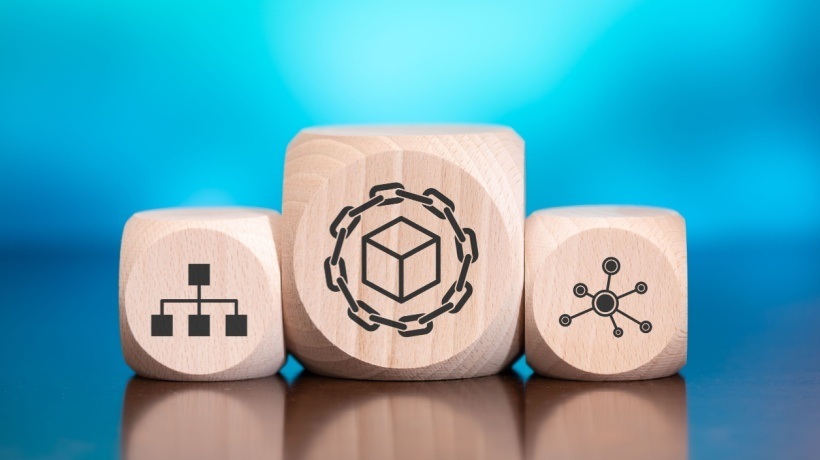Blockchain’s Impact On Higher Education
Higher education is undergoing a transformative shift, driven by innovative technologies that promise to address long-standing inefficiencies and challenges. Among these technologies, blockchain stands out as a revolutionary force with the potential to reshape credential verification, academic records management, and Instructional Design. By integrating blockchain into these areas, educational institutions can create systems that are not only more secure and transparent but also more centered on the needs of learners.
The Call For Innovation In Education: Blockchain And Instructional Design
Higher education has faced growing challenges in meeting the needs of a diverse, global, and increasingly mobile student population. Traditional systems of credential verification and record management are often time-intensive and vulnerable to fraud. At the same time, there is a pressing demand for more personalized and flexible learning pathways that align with evolving workforce requirements (Grech and Camilleri, 2017). Blockchain technology offers a promising solution by introducing a decentralized, immutable ledger that can streamline processes and enhance trust across the educational ecosystem.
Blockchain For Secure Credential Verification
One of the most impactful applications of blockchain in education lies in its ability to revolutionize credential verification. Traditionally, verifying academic qualifications involves manual processes that can be both inefficient and susceptible to fraud. Blockchain addresses these issues by allowing institutions to issue digital credentials securely stored on an immutable ledger. These credentials offer several key benefits:
- Authenticity
Digital diplomas are tamper-proof, ensuring their credibility. - Efficiency
Employers and other institutions can instantly verify credentials, reducing delays in hiring and admissions processes. - Ownership
Students gain lifelong control over their academic achievements, accessible via secure digital wallets (Sharples and Domingue, 2016).
By eliminating the reliance on intermediaries, blockchain simplifies credential verification, saving time and resources for all stakeholders.
Transforming Academic Records Management
The management of academic records is another area ripe for transformation through blockchain. Traditional record-keeping systems are often fragmented, leading to inefficiencies and errors that can hinder students and institutions alike. Blockchain offers a unified, tamper-proof platform for storing and managing records, providing benefits such as:
- Student autonomy
Learners have complete control over their records, which they can easily share with institutions or employers as needed. - Data security
Blockchain’s decentralized nature ensures records are protected from unauthorized alterations or breaches. - Administrative streamlining
Institutions can reduce redundancies and errors in record management, improving overall efficiency (Grech and Camilleri, 2017).
These advancements pave the way for seamless credit transfers and greater flexibility in lifelong learning.
Enhancing Instructional Design Through Blockchain
Instructional Design, the backbone of effective education, also stands to benefit from blockchain’s capabilities. Key applications include:
Smart Contracts For Content Licensing
Blockchain-powered smart contracts can automate licensing agreements, ensuring fair compensation for creators while protecting intellectual property rights. This facilitates the creation and distribution of high-quality learning materials (Tapscott and Tapscott, 2017).
Micro-Credentials And Personalized Learning
Blockchain enables the issuance of micro-credentials or digital badges, which represent specific skills or competencies. These allow learners to build modular, personalized learning pathways that align with career goals (Devedžić and Jovanović, 2015).
Transparent Assessment Systems
Blockchain’s transparency allows for the secure tracking of learner progress, assessment results, and feedback, fostering accountability and trust in the education process.
By incorporating these innovations, Instructional Design can become more flexible and aligned with the needs of both learners and educators.
Addressing Challenges And Charting The Future
While the potential of blockchain in education is vast, its implementation is not without challenges. Institutions must address key concerns, including:
- Interoperability
Ensuring blockchain systems work seamlessly across different institutions and platforms. - Cost
Balancing the financial investment required for blockchain adoption with its long-term benefits. - Privacy
Protecting sensitive learner data while maintaining transparency.
Collaboration among technologists, educators, and policymakers will be critical in overcoming these obstacles and setting standards for blockchain integration.
A Paradigm Shift In Education: Blockchain And Instructional Design
The integration of blockchain technology into higher education and Instructional Design represents a paradigm shift. By addressing persistent challenges in credential verification, academic records management, and learner engagement, blockchain offers a pathway to a more transparent, efficient, and learner-centered education system. As institutions continue to explore and adopt these innovations, the future of education promises to be more equitable, accessible, and aligned with the needs of a dynamic global workforce.
References:
- Devedžić, V., and J. Jovanović. 2015. “Developing open badges: A comprehensive approach.” Educational Technology Research and Development 63 (4): 603–20.
- Grech, A., and A. F. Camilleri. 2017. “Blockchain in education.” Joint Research Centre (JRC) Science for Policy Report. European Commission.
- Sharples, M., and J. Domingue. 2016. “The blockchain and kudos: A distributed system for educational record, reputation, and reward.” In European Conference on Technology Enhanced Learning: 490–96. Springer.
- Tapscott, D., and A. Tapscott. 2017. “How blockchain is changing finance.” Harvard Business Review 1 (9): 2–5.

